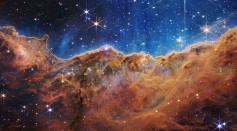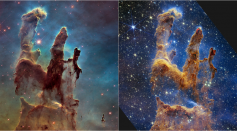Pillars of Creation

Amazing Captures From the James Webb Space Telescope, Including the “Pillars of Creation” and “Phantom Galaxy”

NASA James Webb Space Telescope Finds Universe’s Pillars of Creation
NASA Captures New Images of the 'Pillars of Creation' Surrounded by New Born Stars, Thanks to Hubble!
Could Dark Matter and Black Holes Cause the Swirl In Your Galaxy?
NASA Researchers Resolve Every Star in New Panoramic View of Andromeda
NASA Researchers Resolve Every Star in New Panoramic View of Andromeda
Hubble’s New View of the ‘Pillars of Creation’
Most Popular

H5N1 Bird Flu Has Spread to Humans With 'Extraordinarily High' Mortality Rate, WHO Warns

Roman Lead Coffin Found To Hold Previously Unknown Human Child Remains in Fascinating Discovery

Pluto's Heart: Massive Ancient Collision May Explain How Dwarf Planet's Unique Heart-Shaped Feature Formed, Scientists Discover

Why Do People Struggle to Remember Mundane Things Like Passwords, Locking the Front Door?




![Sat-Nav in Space: Best Route Between Two Worlds Calculated Using 'Knot Theory' [Study]](https://1721181113.rsc.cdn77.org/data/thumbs/full/53194/258/146/50/40/sat-nav-in-space-best-route-between-two-worlds-calculated-using-knot-theory-study.png)

